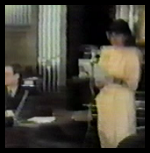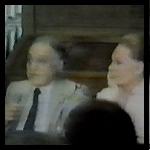
Morning Panel - cellist Eliane Magnan and pianist Marie-Pierre Soma playing the "Allegro ma non troppo" of Beethoven's Sonata No. 3 in A Major, opening the conference Fiorella Operto president of the Schiller Institute in Italy, Helga Zepp-LaRouche, founder of the Schiller Institute on Schiller and the "beautiful and good", Liliana Celani presented the 1884 War Ministry decree with which Giuseppe Verdi and a group of musicians and scientists established C=256 (A=432) as the "official scientific tuning-fork" in Italy, Jonathan Tennenbaum on the fraud of Herman Helmholtz and a demonstration of the Keplerian harmonics of the solar system.

Afternoon Panel - soprano Renata Tebaldi on the absolute necessity to reverse the tendency toward raising the pitch in performance. Maestro Bruno Rigacci, pianist and conductor, gave the first music example proving the superiority of C=256 over A=440 playing the first few bars of Bellini's soprano aria "Casta diva," from the opera Norma first on a piano which had been tuned to C=256 for the conference, and then on the A=440 concert piano. Verdi baritone Piero Cappuccilli demonstrated the difference between the Verdi tuning and today's higher pitch by singing two Verdi arias in the two tunings.